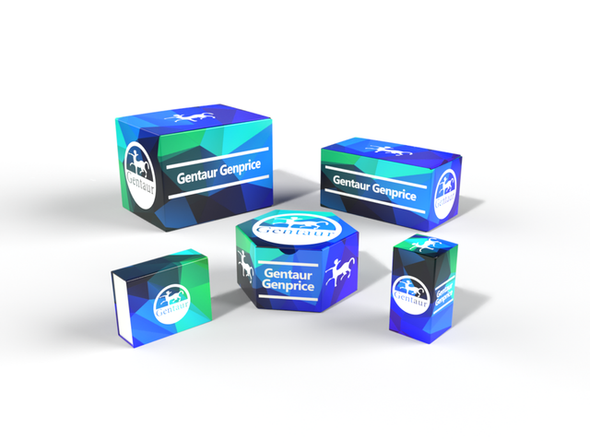Description
ATL1 Antibody | 58-730 | Gentaur UK, US & Europe Distribution
Host: Rabbit
Reactivity: Human
Homology: Predicted species reactivity based on immunogen sequence: Bovine, Monkey, Mouse, Rat
Immunogen: This ATL1 antibody is generated from rabbits immunized with a KLH conjugated synthetic peptide between 477-504 amino acids from the C-terminal region of human ATL1.
Research Area: Neuroscience
Tested Application: WB
Application: For WB starting dilution is: 1:1000
Specificiy: N/A
Positive Control 1: N/A
Positive Control 2: N/A
Positive Control 3: N/A
Positive Control 4: N/A
Positive Control 5: N/A
Positive Control 6: N/A
Molecular Weight: 64 kDa
Validation: N/A
Isoform: N/A
Purification: This antibody is purified through a protein A column, followed by peptide affinity purification.
Clonality: Polyclonal
Clone: N/A
Isotype: Rabbit Ig
Conjugate: Unconjugated
Physical State: Liquid
Buffer: Supplied in PBS with 0.09% (W/V) sodium azide.
Concentration: batch dependent
Storage Condition: Store at 4˚C for three months and -20˚C, stable for up to one year. As with all antibodies care should be taken to avoid repeated freeze thaw cycles. Antibodies should not be exposed to prolonged high temperatures.
Alternate Name: Atlastin-1, 365-, Brain-specific GTP-binding protein, GTP-binding protein 3, GBP-3, hGBP3, Guanine nucleotide-binding protein 3, Spastic paraplegia 3 protein A, ATL1, GBP3, SPG3A
User Note: Optimal dilutions for each application to be determined by the researcher.
BACKGROUND: The protein encoded by this gene is a GTPase and a Golgi body transmembrane protein. The encoded protein can form a homotetramer and has been shown to interact with spastin and with mitogen-activated protein kinase kinase kinase kinase 4. This protein may be involved in axonal maintenance as evidenced by the fact that defects in this gene are a cause of spastic paraplegia type 3. Three transcript variants encoding two different isoforms have been found for this gene.






